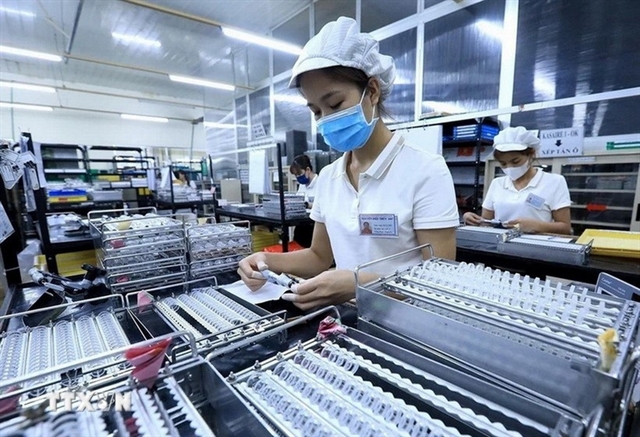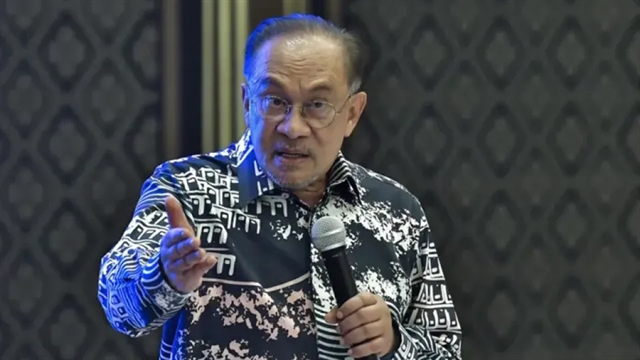.png) Media-OutReach Newswire
Media-OutReach Newswire

SINGAPORE - MediaOutReach - 16 October 2018 - Still own a PC or laptop older than four years old?You may be spending more on its upkeep than buying a new modern device.
Microsoft and Inteltoday unveiled new research from Techaisle, a leading globalSMB IT market research and analyst organization, which highlighted the opportunitiesthat Asia Pacific's SMBs have by upgrading to modern devices at work.
The study[1],which surveyed 2,156 SMB organizations across Asia Pacific, found that the costof keeping a PC more than four years old is US$2,736 per device -- enough toreplace the ageing hardware with two or more new PCs.

The study alsorevealed that a PC older than four years old is also 2.7 times more likely to undergorepairs, resulting in loss in productivity. 85% of larger SMBs, with more than500 employees, have PCs that are older than four years, compared to 60% insmaller SMBs employing less than 100 employees. This underscores the widespreadusage of older devices within SMBs in the region.
"PCs are theproductive engines for most SMBs in the region, where organizations relyheavily on their devices for their day-to-day tasks. However, 7 in 10 SMBssurveyed have PCs that are older than four years, which significantly increasesmaintenance costs," said Bradley Hopkinson, Vice President, Consumer andDevices Sales, Asia, Microsoft. "With budget constraints being the number oneIT challenge among SMBs today, business leaders should seek to adopt a devicemodernization strategy so that they can maintain costs, while safeguardingtheir organization from newer digital risks."
Increased security and reliability with a modern device
The new studyrevealed that in the last year alone, as high as 67% of SMBs may have experiencedPC security and data theft breaches, with only 15% of them actually reportingthese attacks.
"With a modern PCpowered by Windows 10, SMBs can be assured of up-to-date security updates,powered by cloud intelligence that proactively protects their businesses,"added Hopkinson. "By reducing the potential risk of cyberthreats with a modernPC, SMBs can definitely improve their productivity and avoid downtime."
Addressing business priorities with a modern device approach
"SMBs constitute 98%of enterprises in the Asia Pacific region, and employ half of theworkforce in the region yet many of them still have PCs older than four yearsold. We believe that by having them move to a modern PC powered by an IntelCore processor, they can unlock greater productivity for their business whilereducing IT management time and costs," said Santhosh Viswanathan, ManagingDirector, Sales and Marketing Group, Asia Pacific Japan Territory, Intel.
Respondents in thestudy identified their top business priorities as increasing profitability,business growth and improving workforce productivity. The study highlightedthat SMBs are looking at IT as a response to address their business issues. Thetop IT priorities included investing in PCs, cloud solutions and securitysolutions.
"We found that thekey barriers in migrating to a newer device were concerns of legacyapplications not being able to work on a newer operating system, along with thelack of budgets. However, the benefits of adopting a modern device strategyoutweighs the concerns. Too often, SMB owners focus on short term costs andwhile in most cases this approach is absolutely valid, at times it can lead tosituations that cost them more. The choice between maintaining older PCs andreplacing them with newer PCs is one such area. However, these SMBs shouldre-evaluate their decision given the higher cost of maintaining older PCs whichhas a larger cumulative effect on the budget than purchasing newer PCs withlatest technology. SMBs in the region should seriously consider making theshift to a newer PC in the immediate future," said Anurag Agrawal, CEO &Analyst, Techaisle.
SMBs have an opportunity to improve theiroverall operations with modern devices. For those who have already made themove to newer PCs, study revealed that:
Morethan 42% of PCs used in SMBs are still on older versions of Windows today,according to the study. Upgrading to a Windows 10 modern device will offerexperiences that are more familiar, safe, secure, and productive.
With the upcoming Windows 10 October 2018 Update,users can enhance their productivity to help them makethe most of their time across work, home and everywhere in between. Newfeatures include Your Phone app which allows users to access photos and textson Windows 10 devices, the new To-Do app that helps manage, prioritize andcomplete tasks, as well as enhancements across Outlook.com, Edge as well asOffice apps. In addition, users can expect general Windows securityimprovements, including support for biometrics login via Windows Hello forBusiness for Azure Active Directory and Active Directory.
For more information, visit https://blogs.windows.com/.
AboutMicrosoft
Microsoft (Nasdaq "MSFT" @microsoft) enables digital transformation forthe era of an intelligent cloud and an intelligent edge. Its mission is toempower every person and every organization on the planet to achieve more.
About Intel
Intel (NASDAQ: INTC) expands the boundaries of technology to make the mostamazing experiences possible. Information about Intel can be found at newsroom.intel.com and intel.com.
[1] The Microsoft-Intel Make the Shift study was conducted in August 2018,and involved 2,156 respondents from 5 markets in Asia Pacific (Australia,India, Indonesia, Japan and South Korea).

.jpg)


